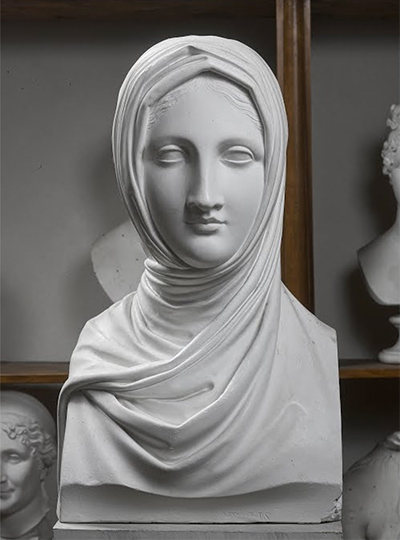Antonio Canova sculpted created this statue between the years 1821 to 1822. He was inspired by the Vestal Virgins, who were part of Ancient Rome.
The Vestal Virgin were the proud maidens to Vestal, the goddess of family, home, and hearth. Vestal practiced chastity and lived a life of pure innocence, and her consecrated virgins were supposed to emulate her. They attended to her in the temple, and their duty was to serve only Vestal. The Vestal Virgins portrayed an image of a sacred heart and purity. Antonio used their character traits to sculpt the Herm of a Vestal Virgin. The sculpture was one of his last pieces before he passed away in 1822.
The statue is currently located in Italy. The discovery of House of the Vestals in Pompeii leads to the start of these statues by every famous sculptor in the 1700s to the 1800s when Antonio made his masterpiece. His piece was one of the best of the category because he conducted proper research on the Vestal Virgins. Antonio Canova did not just hope on a wave because it was the popular thing at the time; he did his research slowly and precisely up until the 1820s, where he made that sculpture.
Antonio Canova used marble stone to create the Herm of the Vestal Virgin. The marble brought the image to life on many accounts. The Neoclassical take on the statue was what made this particular piece very popular across Rome and the larger Italy. Canova showed the innocence of the Vestal Virgins by the use of smooth lines on the rock. The Herm only had the head and neck of the Virgin. She was clothed in a cloak that covered her hair and draped over her neck, which brought attention to her face that was pure and innocent. She commanded respect because of the role she played in the Roman world.
Her shoulders were stiff and upright, showing that she was proud of the person she is in society. Canova curved the image correctly and even incorporated the cloak that so many other sculptors and painters failed to indicate in their pieces, and that goes to show how extraordinary Antonio was to detail and telling a story. The herm of a Vestal Virgin is so pure that it draws emotion out of the viewer that they almost want to touch it and have a feel of the smoothness of the marble and her unwavering stare. This is an art that has attracted many because of the techniques used.




